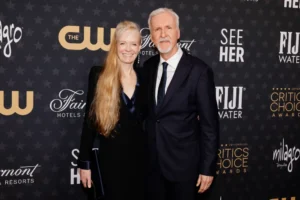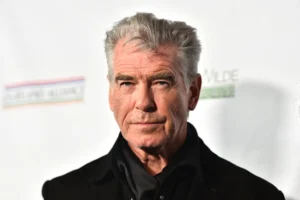“The Battle for Laikipia” offers a prescient perspective by focusing on the communities that are living with the consequences of climate change right now: the ranchers and pastoralists of Laikipia, located on the equator in Kenya. These people, their cattle, their farms — their means of life — have been dealing with drought. Over a period of approximately two years, the documentary’s directors Daphne Matziaraki and Peter Murimi show how climate change can directly resurface tensions that have been kept at bay for generations. When resources dwindle, battles arise.
The framework for the feature is how colonialism still manages to impact indigenous people many years after their nations were granted independence. Many Brits migrated to Kenya during the time of the empire; their descendants still live there and own much of the land in Laikipia. The region is also home to many indigenous, semi-nomadic people who raise cattle. “The Battle for Laikipia” follows a few white families who have lived in the area for four generations, as well as a few members of the Samburu people. The doc establishes that the groups co-existed peacefully for many years, though they remained suspicious of each other. Now gripped by a drought, all of them find themselves in direct competition.
While any climate change documentary carries a certain urgency, Matziaraki and Murimi remain methodical and patient in their filmmaking. Their camera’s gaze captures the terrain, the people and the animals in extended shots that allow the space for the story to come alive. Animals graze as the indigenous families discuss what to make for food; meanwhile, the white farmers drive their trucks and use their iPads to call others about their anxiety about the climate and their neighbors.
“The Battle for Laikipia” begins with a tour guide explaining to a group why giraffes have different color spots on their skin: an explanation of melanin. The introduction is slightly on the nose, but it sets up the narrative well. Ultimately, this is the story of privileged white ranchers — colonizers — and the Black people indigenous to the land who find themselves on its outskirts.
The ranchers claim the land as their inherited legacy, never mind how it was acquired in the first place. They talk of familial history in quietly comforting nostalgia. Those scenes are juxtaposed with others where they intimidate and try to expel the pastoralists from the land. In one disturbing incident, the ranchers discuss the death of pastoralism in a community meeting. The sequence turns unsettling as it’s revealed it is happenening in the pastoralists’ absence. No one thought to include them. Jo one thought they should have a say in how to conduct their lives
While the story takes place at a time of elections, the filmmakers keep that political battle in the background. Rather, they zero-in on one figure from each side: Simeon, a member of the Samburu people, proud of his heritage while trying to carve out a living for his family; and Maria, a matriarch of a family of white farmers trying to do the same. They both speak of Kenya as their homeland. However, there is a slight edge in Maria’s voice, as if she doesn’t believe it. Her family carries guns and patronizingly calls the native people “very clever.” Meanwhile, Simeon and his mother reveal their anxiety for their animals. The disparity in power becomes abundantly clear.
Therein lies the strength of “The Battle for Laikipia.” Conclusions about continuing colonization can be drawn. The climate crisis is presented in composed ways, without the angst and hysteria it calls for. Yet the filmmaking remains distant enough to allow all the subjects the time and space to tell the story. The audience might not leave with an urgent call for action, but they get a clear snapshot of what’s happening now in Laikipia within a complicated historical frame.
















+ There are no comments
Add yours